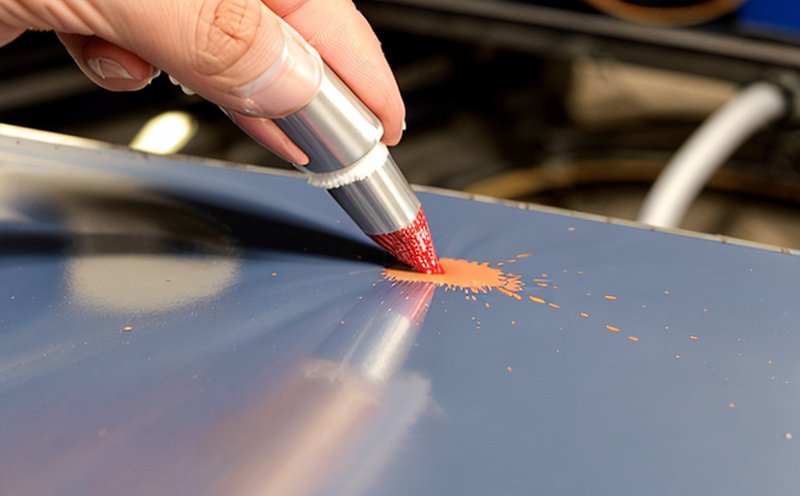ISO 9227 Salt Spray Corrosion Resistance of Painted Furniture Metal Components
The ISO 9227 salt spray test is a critical procedure in the furniture industry, particularly for products that incorporate metal components with surface coatings. This test evaluates the resistance to corrosion exhibited by painted or powder-coated metal parts used in furniture through exposure to a simulated marine atmosphere. The method provides a standardized approach to assess the durability of finishes under conditions that mimic salt spray environments.
The test is widely recognized and utilized as it ensures consistent quality control, compliance with international standards, and enhances product longevity. It plays a pivotal role in the development and manufacturing processes by providing insights into the protective effectiveness of coatings against rusting and degradation caused by environmental factors like humidity and salt-laden air.
The test setup involves placing specimens under controlled conditions that simulate real-world corrosion environments. These include constant temperature, humidity, and exposure to a sodium chloride mist. The duration of testing can vary based on the specific requirements set forth in the standard (typically ranging from 48 hours to several weeks). This allows manufacturers to assess how well their products withstand harsh environmental conditions before they reach consumers.
The results generated by this test are crucial for various stakeholders within the furniture sector, including quality assurance departments, R&D teams, and regulatory compliance officers. They help ensure that new product designs meet industry expectations regarding longevity and reliability while also aiding in continuous improvement efforts aimed at enhancing overall performance.
Understanding the nuances of ISO 9227 is essential for those involved with furniture manufacturing or quality assurance. By familiarizing themselves with its requirements, organizations can better prepare their products for market entry, ensuring they meet necessary standards and consumer expectations.
| Application Type | Description |
|---|---|
| Furniture Manufacturing | Ensuring product durability and compliance with environmental standards. |
| R&D & Development | Evaluating new coating formulations against existing materials. |
Industry Applications
- Furniture Manufacturing: To ensure product durability and compliance with environmental standards.
- R&D & Development: Evaluating new coating formulations against existing materials.
- Quality Assurance: Monitoring the performance of different finishes under controlled conditions.
- Procurement: Selecting suppliers who adhere to rigorous testing protocols.
Why Choose This Test
The ISO 9227 salt spray test offers numerous benefits that make it an essential tool for quality assurance and product development in the furniture industry:
- Standardization: Ensures consistent results across different laboratories worldwide, facilitating easier comparisons.
- Environmental Simulation: Mimics real-world conditions to provide accurate assessments of coating performance.
- Predictability: Helps predict long-term behavior of products, allowing for informed decision-making during design stages.
- Regulatory Compliance: Aligns with international standards like ISO 9227, ensuring that products meet legal requirements and industry best practices.
By incorporating this test into their quality assurance processes, manufacturers can enhance customer satisfaction and build trust in their brand. It also supports sustainable practices by reducing waste associated with premature failures due to poor coating performance.
Competitive Advantage and Market Impact
The ISO 9227 salt spray test provides several competitive advantages that can significantly impact a company's market position:
- Demonstrated Quality Assurance: Customers are more likely to choose products proven to withstand harsh environmental conditions.
- Informed Decision-Making: Provides valuable data for continuous improvement initiatives, leading to better product offerings over time.
- Increased Efficiency: By identifying potential issues early in the design process, companies can streamline production and reduce costs associated with rework or recalls.
- Better Brand Reputation: Positive results from this test contribute positively to brand perception among consumers who value durability and reliability.





